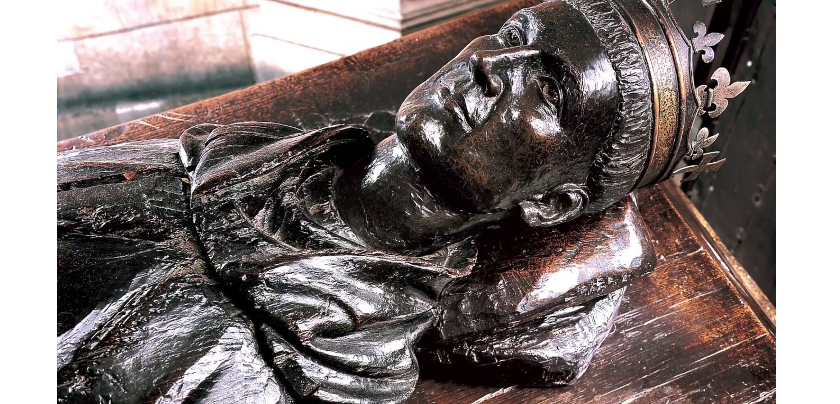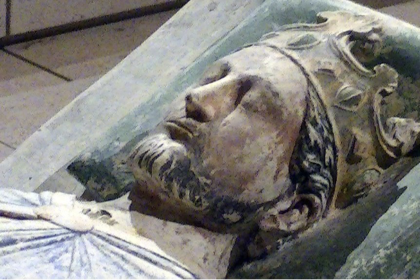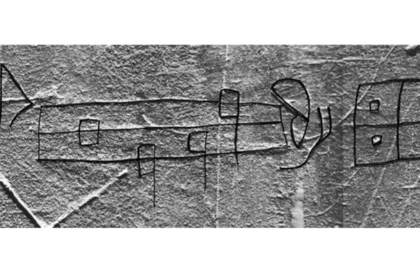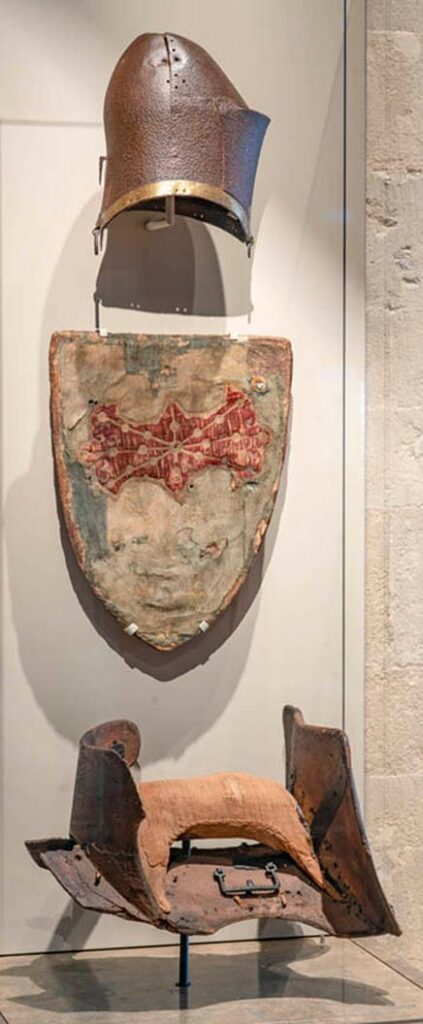
Henry V was buried in Westminster Abbey on the 7th November, 1422. He had died in France on the 31st August, after which his body was embalmed and lay in Rouen Cathedral before being brought back to England.
As part of the funeral ceremony, a shield, helm, saddle, and sword, his funeral ‘achievements,’ were carried in procession, to show Henry’s martial success and knightly honour, and then displayed on a wooden beam above the chantry chapel built around his tomb. Unfortunately the sword has been lost to us, but remarkably the saddle, helm, and shield still survive in the Westminster Abbey museum.
The saddle is the oldest surviving of its type – comparatively light-weight compared with earlier designs. It was originally covered in blue velvet, and some of the original leather and hessian padding can still be seen.
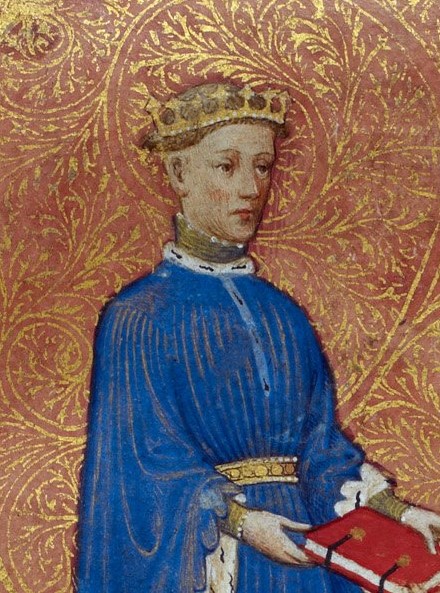
The domed helm, made for tilting and not battle, is decorated with copper alloy, and weighs 7.3kg – a not insignificant weight to be carrying on your head!
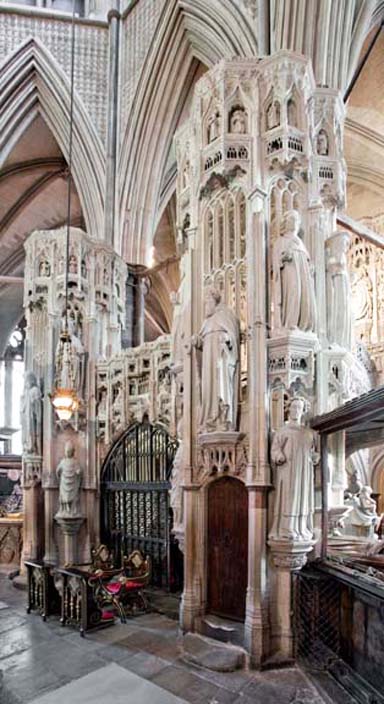
The most remarkable part of the assemblage, though, is the shield. Made of limewood, the shield measures 2 feet in height, and the front is painted with the arms of England and France. It is the reverse, though, that is of greatest interest. The inner surface bears the arms of Henry’s stepmother, Joan of Navarre, so the shield probably belonged originally to his father, Henry IV. Incredibly, this surface also has the remains of some of the oldest Chinese silk in Europe. We can tell from what remains of it that it was of imperial quality. It is believed to have come from a consignment brought into northern Europe along the Silk Road in the early 14th century, around the time this trade link was broken; meaning the silk was already very old when it was used on this shield.
A sword was found in 1869 and attributed to Henry V’s funeral achievements; however the design was recently shown to be from a much later date, possibly late 15th century.

